Travel
Norway May Be Dark These Days, But Never Fear—Oslo’s Art Scene Is as Luminous as the Northern Lights
It’s a great moment for Munch and Mother Nature in the capital and up north.
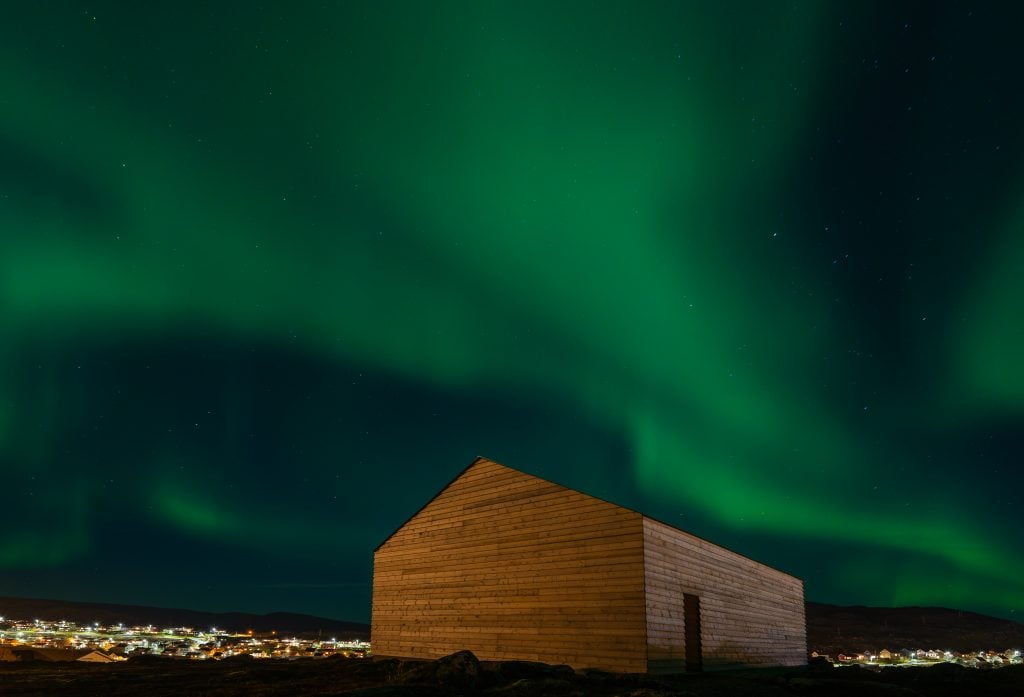
It’s a great moment for Munch and Mother Nature in the capital and up north.

Artnet News in Partnership With NetJets

Sure, Norway is spectacular in the summer, when the midnight sun never really sets—though on the other hand, who’s afraid of the dark? With public art projects designed to reflect the ever-changing landscape and the aurora borealis due to put on a show in the sky, now is an amazing time to explore this part of the Arctic.
Plus, between the splashy opening of the long-awaited Munch museum and the new National Museum, set to be Scandinavia’s biggest when it launches next year, Oslo’s art scene is having more than just a moment. The city is on the map as an international art destination, open and here to stay.
For discerning travelers looking to connect with nature by way of culture across Oslo and Northern Norway (with as little as 10 hours’ notice, no less), NetJets offers personalized service with heightened attention to detail gained from more than 55 years of experience, industry-leading standards, and a multilingual team dedicated to anticipating your every need.
God tur!
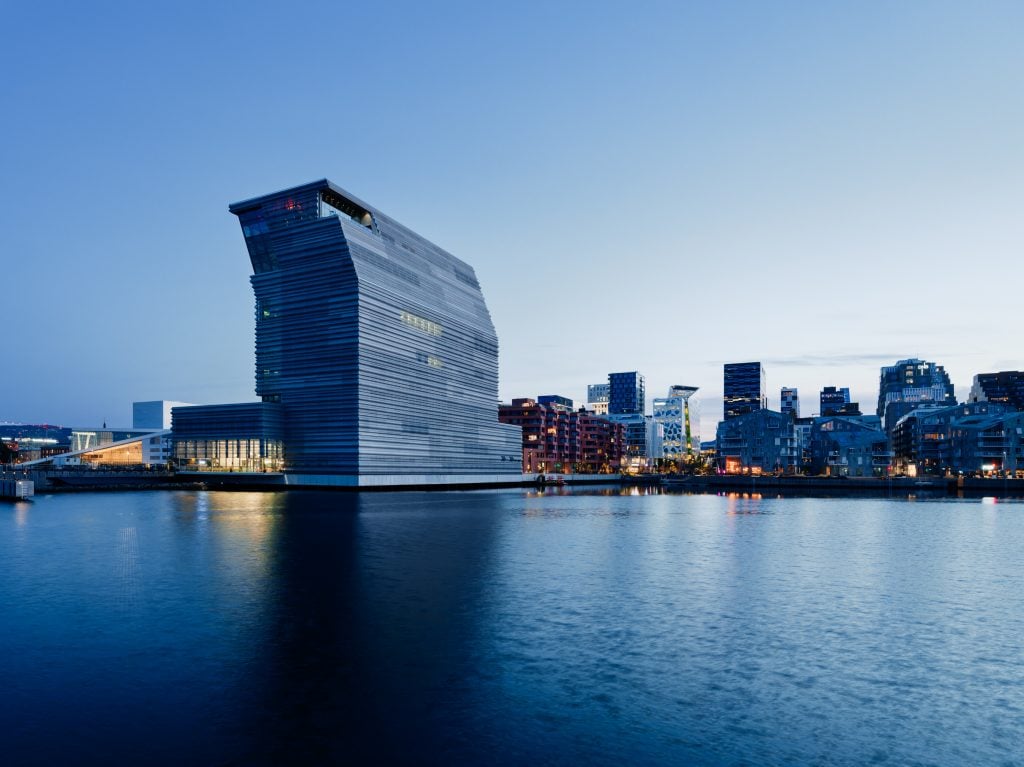
Oslo’s new Munch museum. Photo: Einar Aslaksen.
See and Do: October saw the highly anticipated opening of the new Munchmuseet, with 13 levels devoted to the life and work of Norway’s famously tortured soul, Edvard Munch. Designed by architects Juan Herreros and Jens Richter of Spain’s Studio Herrero, the tower—clad in recycled, perforated aluminum panels—hunches over the waterfront while housing nearly 30,000 of the artist’s works (including six impressions of The Scream), which he bequeathed to the city of Oslo before his death in 1944. It launched with Tracey Emin’s first major Nordic exhibition, “The Loneliness of the Soul,” with a range of her works—including My Bed (1998)—alongside a selection of Munch paintings that have influenced her (until January 2, 2022). There’s a live art program encompassing film, music, and performance, too.
The museum is in the former container port of Bjørvika, which has become a buzzing cultural district with floating, fjord-side saunas and Snøhetta’s marble-and-glass Oslo Opera House, whose scalable roof was designed to mimic the mountains surrounding the city. It slopes all the way down to the water’s edge, where you’ll find Salt. Conceived as a nomadic art project, the cultural hub has six saunas (the largest fits 80 people), six stages (including one that looks like a giant fish-drying rack—something normally found along the shores of Northern Norway), rotating artworks, and festival vibes.
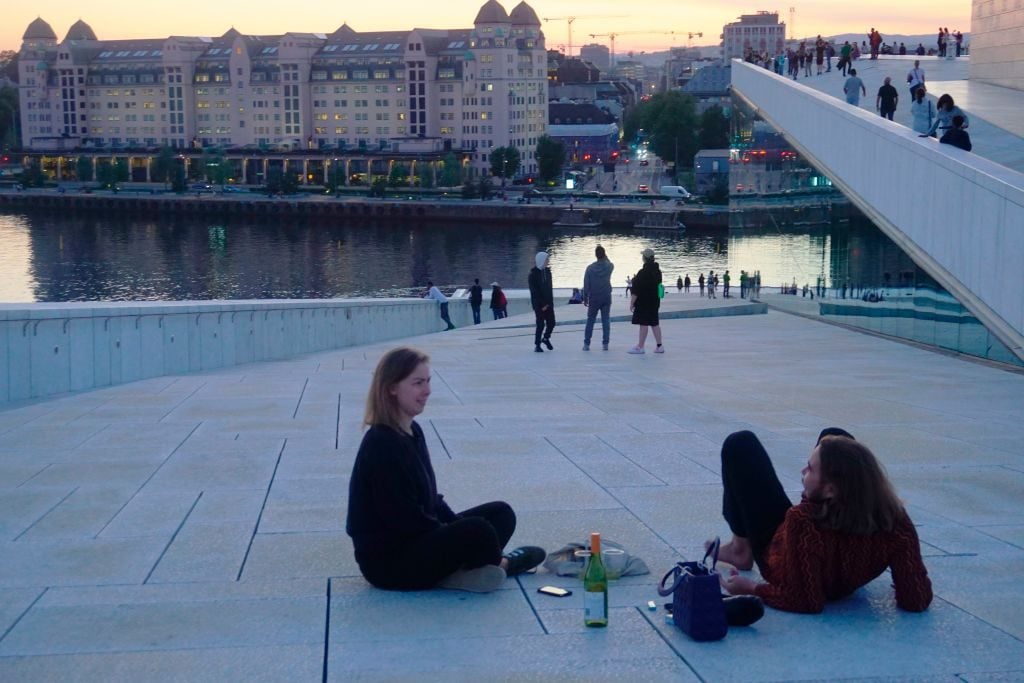
Outside the Oslo Opera House. Photo: Barrie Fanton/Education Images/Universal Images Group via Getty Images.
The area recently welcomed VI, VII, where New York transplant Esperanza Rosales introduces the work of fellow artists from around the world. It is one in a crop of local galleries that have been bringing global talent and attention to Oslo’s contemporary art scene, which also includes Standard (Oslo)—a fair circuit fixture representing the likes of Norwegian multimedia artist Gardar Eide Einarsson—and OSL Contemporary, whose converted West End fire station showcases the work of conceptual artists such as Los Angeles- and Oslo-based photographer Bjarne Bare and Swedish painter Ragna Bley. (Her large-scale abstractions are getting a solo exhibition from November 12 until December 22, 2021.)
Meanwhile, the new National Museum of Art, Architecture, and Design is rising fast along the city’s Vestbanen waterfront. Upon opening—set for June 2022—it will be the largest art institution in the Nordic countries, with more than 400,000 objects spanning ancient artifacts, modern design, and contemporary art. Designed by German architectural firm Kleihues + Schuwerk using bronze, marble, oak, and Norwegian slate, the building features a glowing exhibition hall on its rooftop. You can book a guided tour to see the site as it takes shape.
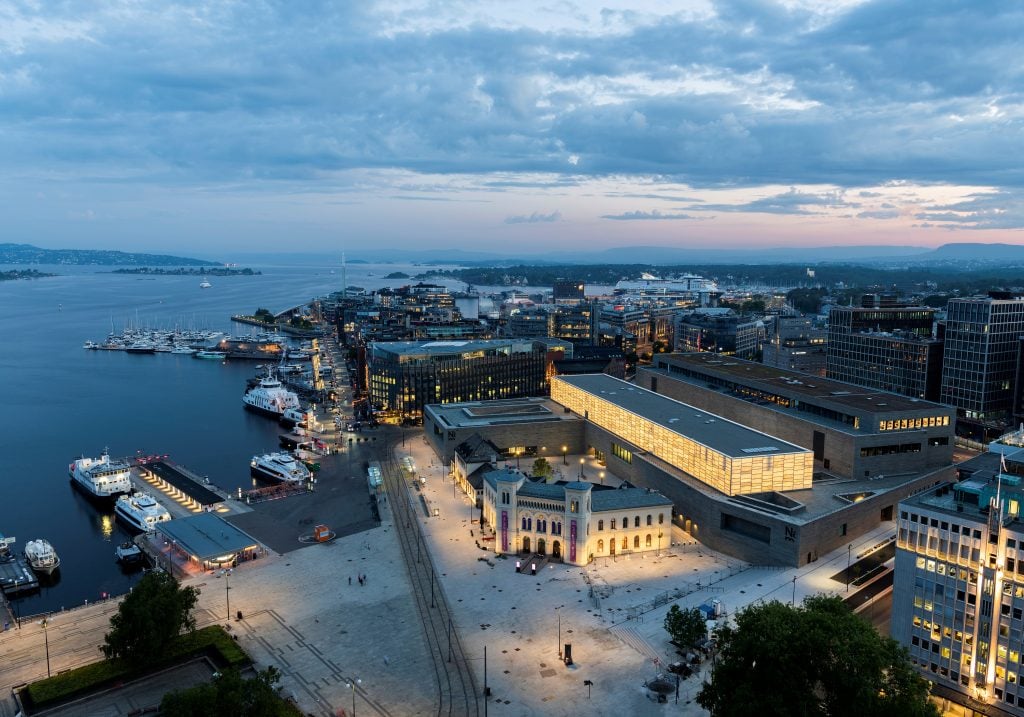
Oslo’s new National Museum is set to open next June; it will be Scandinavia’s biggest art institution. Photo: Borre Hostland.
Conceived by Scottish artist Katie Paterson in 2014, Future Library is looking much further ahead, commissioning one book per year over the next century from writers including Margaret Atwood and Ocean Vuong (Zimbabwean novelist, filmmaker, and activist Tsitsi Dangarembga penned the latest). Upon completion, each manuscript is locked inside a so-called, yet-to-open “Silent Room” that Paterson designed within Bjørvika’s stunning new Deichman public library—and they can’t be read until 2114. At that point, all 100 works will be printed on paper from 1,000 Norwegian spruce trees planted specifically for the project; just north of Oslo, the Nordmark Forest is open to visitors year-round.
Fifteen minutes from the city, on Høvikodden peninsula, Henie Onstad Art Center houses the private art collection of the late, great Norwegian figure skater turned film star Sonia Henie and her footballer cum ship-owner husband, Niels Onstad—not to mention the newly opened, Snøhetta-designed Gallery Merz. Named after the avant-garde German artist Kurt Schwitters, its semi-permanent exhibition “Merz! Flux! Pop!” focuses on his years in Norway along with works from his contemporaries and artists he inspired, from Man Ray to Yoko Ono (until May 29, 2022).
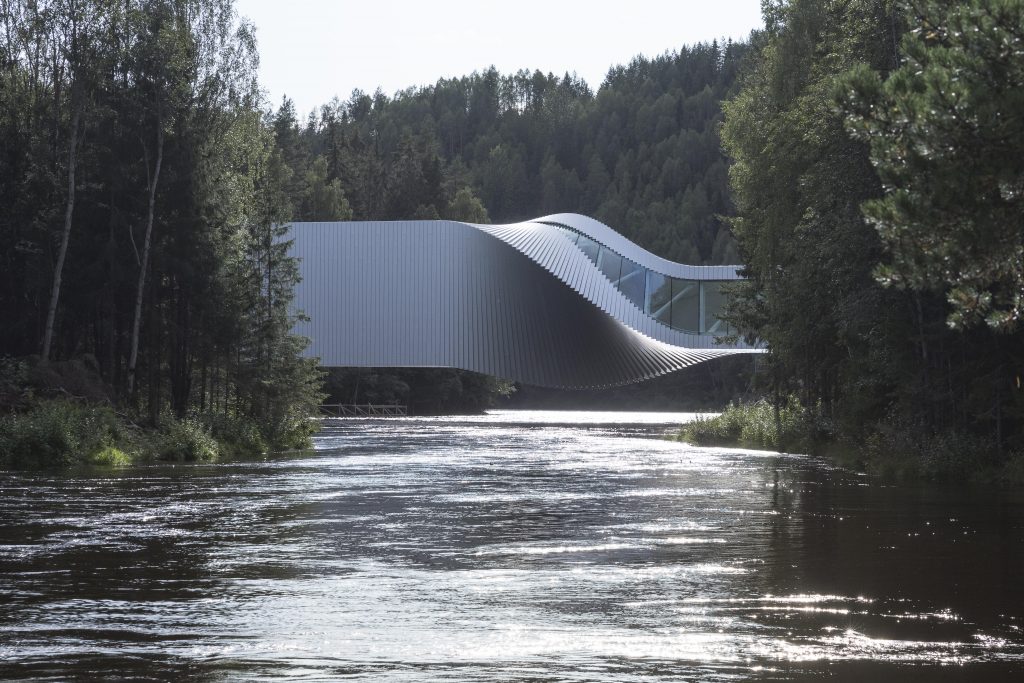
At Kistefos, the Bjarke Ingels–designed Twist gallery is also a footbridge and a sculpture. Photo: Laurian Ghinitoiu.
And while Hadeland’s Kistefos Museum just closed for the season—with its new Twist gallery, designed by Bjarke Ingels Group (BIG), doubling as a sculpture and footbridge—you can visit the surrounding sculpture park anytime. It has a growing collection of site-specific works by everyone from Anish Kapoor to Norwegian multimedia artist Ida Ekblad (as of this September), and is well worth the one-hour detour north from Oslo.
Eat and Drink: Norway’s only three Michelin-starred restaurant, Maaemo (“Mother Earth,” in ancient Norse) forfeited its stars to move into a bigger space in Bjørvika last year. It quickly gained them back—and added a Michelin Green Star—for chef Esben Holmboe Bang’s seasonally changing tasting menus, with up to 20 courses that pluck from the wilds of Norway. There’s also The Conservatory—a new, reservation-only cocktail bar on the premises.
Maaemo’s waiting list can be quite long, so if you can’t get a table, take note: Holmboe Bang just unveiled the far less formal Vandelay next door. It’s an all-day brasserie serving oysters and cheeseburgers and “fries tossed with tasty salt,” plus house-made soft-serve ice cream.
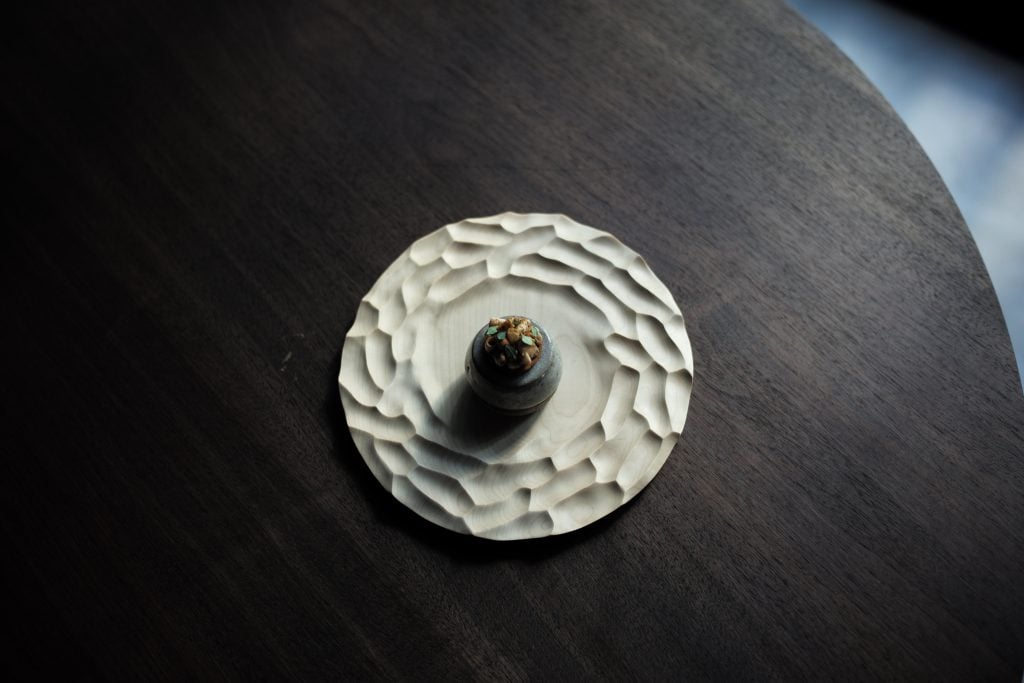
A mushroom-and-yeast dish at Maaemo. Photo: Lasse Fløde.
Stay: In 2019, the ca.-1919 former headquarters of the Norwegian America Line reopened as Amerikalinjen, downtown on Jernbanetorget Square. Its 122 rooms and suites have mid-century-style furnishings and pendant lamps by Norwegian glassblowing company Hadeland, while the transatlantic art collection includes works from American figurative painter Alex Katz and British visual artist Julian Opie. There’s even a jazz club.
Next to the Royal Palace gardens, the family-run Camillas Hus has seven spacious, individually designed guest rooms equipped with tablets and deep-soaking tubs in a ca.-1845 former residence—which is also available to book in its entirety.
Travel safely without the hassles of crowded airports and maximize your leisure time with NetJets. With global access to more than 760 aircraft worldwide in 5,000-plus airports across 200-plus countries and territories, the travel possibilities are infinite. Enhanced aircraft cleaning protocols, the most experienced pilots, and an unparalleled commitment to safety mean you can relax en route to your destination with total peace of mind—the ultimate luxury.

Roni Horn, Untitled, commissioned by Norwegian Scenic Routes, in Havøysund. Photo: Frid-Jorunn Stabell.
See and Do: Situated above the Arctic Circle, northernmost Norway is pretty much the best place in the world to see the Northern Lights, particularly come fall and winter. And with its dramatic, sometimes desolate landscapes between mountains and sea, the region has been a natural setting for art since forever. Just look at the Rock Art of Alta, a UNESCO World Heritage Site in Finnmark (i.e., Far North), with thousands of paintings and petroglyphs dating from ca. 4200 to 500 B.C. in the Alta Fjord.
More recently, the Norwegian Public Roads Administration has tapped more than 50 artists and designers from near and far for its Norwegian Scenic Routes initiative. There are now 18 roads with site-specific works of art and architecture along the way, all created to enhance the experience of nature.
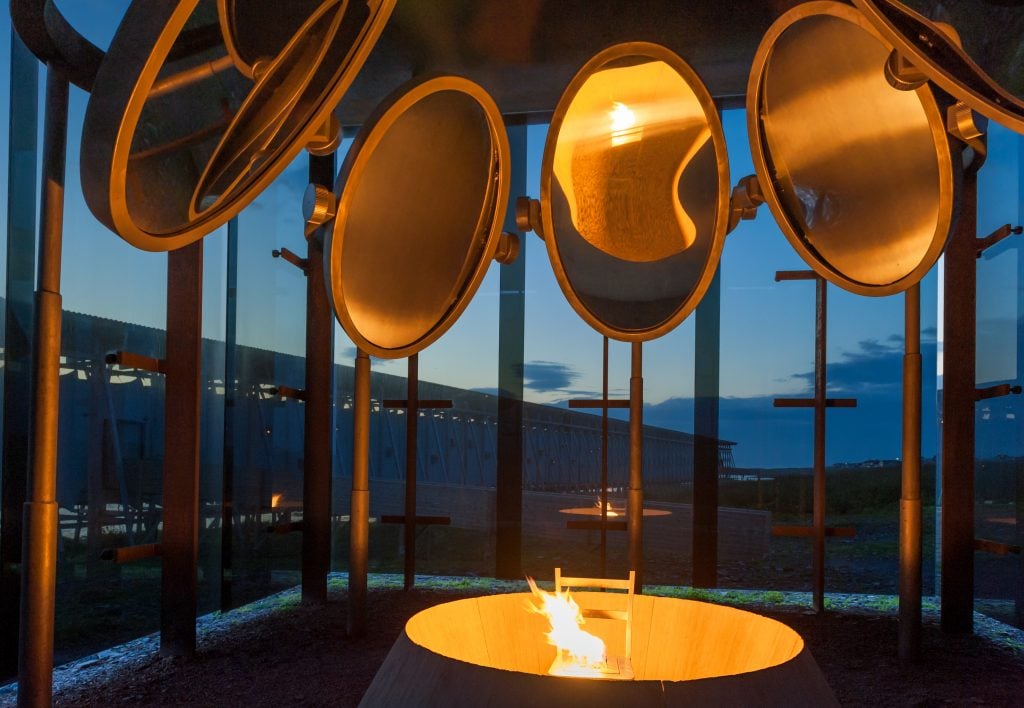
Louise Bourgeois, The Damned, The Possessed, and The Beloved, at Peter Zumthor’s Steilneset Memorial in Vardø, commissioned by Norwegian Scenic Routes. Photo: Jarle Wæhler, Statens vegvesen.
This fall, two luminescent glass cylinders by American artist Roni Horn were installed within a windowless, peat-walled hut designed by Jensen & Skodvin Architects in Havøysund, on the coast of Finnmark. It is not far from the Peter Zumthor-designed Steilneset Memorial in Vardø, with its burning steel chair by Louise Bourgeois, which HM Queen Sonja unveiled a decade ago to honor victims of Finnmark’s 17th-century sorcery trials.
The road to Lofoten is another one to take, not only because of the art en route, but also because of its final destination: Kaviar Factory, a ca.-1950 landmark in the fishing village of Henningsvær. The former “Lofoten paste” caviar factory is now a contemporary art center, currently showing mixed-media pieces featuring bamboo, Lego bricks, marble, porcelain, silk, and sisal twine by Ai Weiwei (until October 3, 2022).

Lofoten’s Kaviar Factory. Photo: Kristin Folsland Olsen.
While remote, the archipelago is something of an art haven. It is home to Norway’s renowned multidisciplinary artist A K Dolven, who is working on her coming retrospective at the new National Museum in Oslo from her studio in Lofoten’s tiny, seaside village of Kvalnes (population: 10). She sometimes hosts tours during which you can see her works in progress, which explore the relationship between humans and nature.
Back in 1988, Dolven started Artscape Nordland, a public art project that invited 35 international creators such as Iceland’s Hulda Hákon and Britain’s Sir Antony Gormley to sculpturally respond to different environments in 34 municipalities across the county, including Lofoten and beyond. Recently, she and Gormley helped open the Maaretta Jaukkuri Foundation in Kvalnes. Named after Artscape Nordland’s original curator, the non-profit invites artists, philosophers, and scientists of all disciplines to work immersed in nature for two months at a time, while offering a program of public events.

Antony Gormley, Havmannen, an Artscape Nordland commission overlooking Ranfjord. Photo: Vegar Moen.
Eat and Drink: Don’t miss Holmen Lofoten, a destination restaurant with rooms—or, rather, three rustic-luxe fisherman’s cabins. For its Kitchen On The Edge Of The World culinary series, the restaurant invites top chefs from around the globe (Hugh Fearnley-Whittingstall, Nuno Mendes, Nathan Outlaw) to cook above the Arctic Circle over the course of a long weekend. While the next event isn’t until 2022, the island-inspired dishes from chef and head gardener Richard Cox (formerly of Bristol, England’s acclaimed Ethicurean) are still a powerful draw, as are the guided foraging, fishing, and hiking.
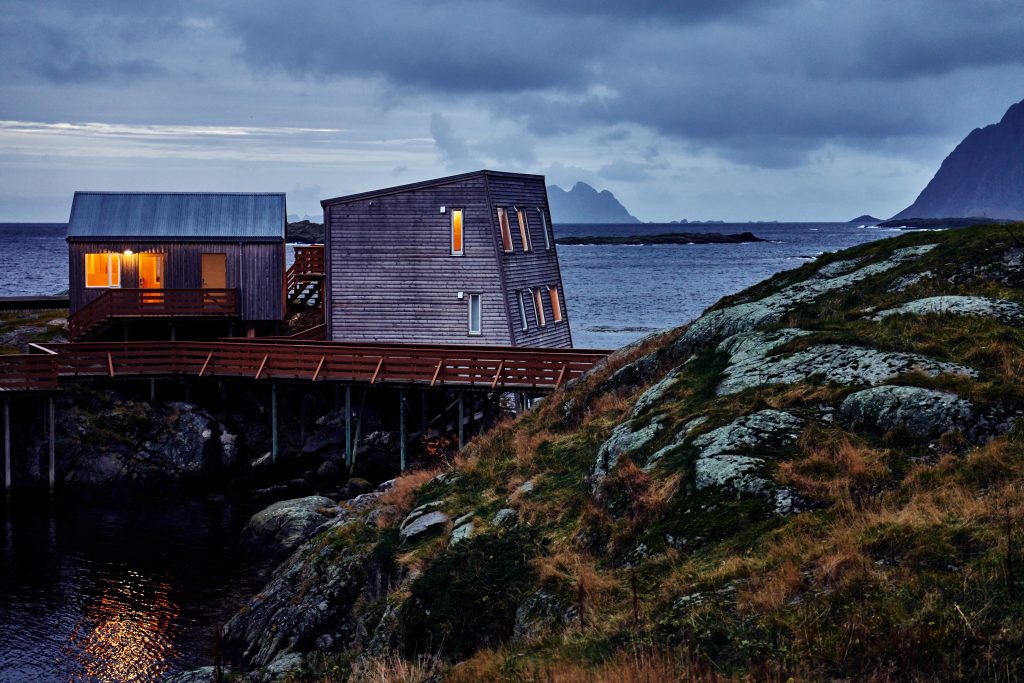
The Holmen Lofoten fisherman’s cabins. Courtesy of the resort.
Stay: For the past decade, Snøhetta has quietly been developing Lofoten Opera Hotel—a low-lying, almost snake-like structure blending into a rocky outcrop, overlooking the sea from the archipelago’s far west.
To learn more about the advantages of flying with NetJets, visit netjets.com.